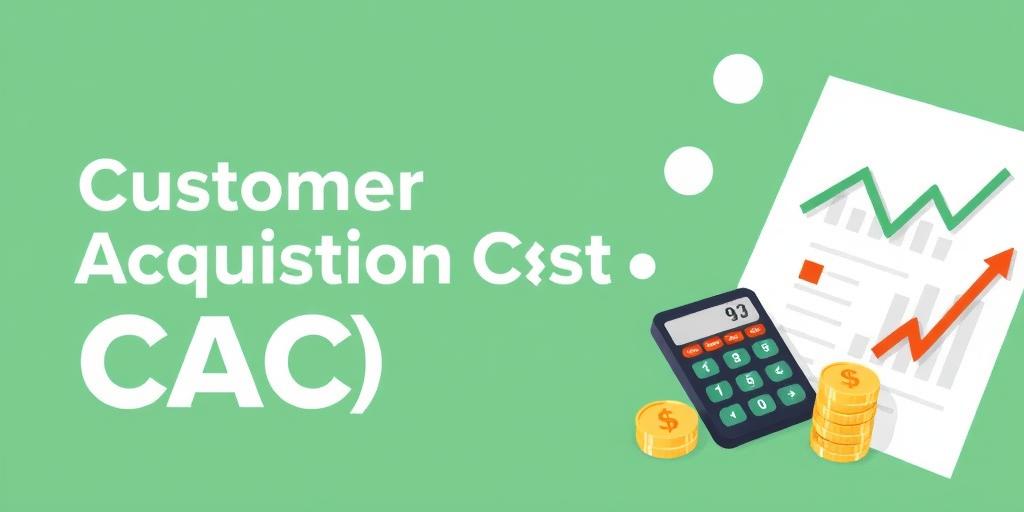Calculating Customer Acquisition Cost (CAC): Are You Profitable?
In the world of business, understanding your financials is crucial for sustainability and growth. One of the most important metrics to keep an eye on is Customer Acquisition Cost (CAC). This article will break down what CAC is, how to calculate it, and what it means for your business's profitability.
What is Customer Acquisition Cost (CAC)?
Customer Acquisition Cost (CAC) is the total cost of acquiring a new customer. It encompasses all the expenses related to sales and marketing efforts. Knowing your CAC helps you evaluate the efficiency of your marketing strategies and the overall profitability of your business.
Why is CAC Important?
- Profitability Assessment: CAC helps determine if the cost of acquiring a customer is justified by the revenue they generate over their lifetime (Customer Lifetime Value or CLTV). If your CAC is higher than your CLTV, you’re losing money.
- Marketing Strategy Optimization: By understanding how much it costs to acquire a customer through different channels, you can allocate your marketing budget more effectively.
- Investor Relations: Investors often look at CAC to gauge the scalability and sustainability of a business model. A decreasing CAC indicates improved efficiency, making your business more attractive.
How to Calculate CAC
The formula for calculating CAC is straightforward:
CAC = Total Sales and Marketing Expenses / Number of New Customers Acquired
Total Sales and Marketing Expenses: This includes all costs related to acquiring new customers, such as:
- Advertising costs (e.g., Google Ads, social media ads)
- Salaries of sales and marketing staff
- Commissions and bonuses paid to sales teams
- Marketing software and tools
- Content creation expenses
- Public relations costs
Number of New Customers Acquired: This is the total number of new customers you’ve gained during the period you’re analyzing.
Step-by-Step Example
Let’s say your business spends $10,000 on sales and marketing in a month and acquires 100 new customers. Your CAC would be:
CAC = $10,000 / 100 = $100
This means it costs you $100 to acquire each new customer.
Factors Influencing CAC
Several factors can impact your CAC:
- Marketing Channel: Different channels have different costs and effectiveness. For example, organic social media may have a lower cost but take longer to produce results compared to paid advertising.
- Sales Cycle Length: Longer sales cycles typically result in higher CAC because they require more resources and time to convert leads into customers.
- Market Competition: Highly competitive markets often have higher advertising costs and require more aggressive marketing strategies, increasing CAC.
- Customer Value: The perceived value of your product or service affects your ability to attract customers. Higher perceived value can lead to lower CAC.
Strategies to Reduce CAC
- Optimize Your Marketing Funnel: Identify and address any bottlenecks in your marketing funnel to improve conversion rates.
- Improve Targeting: Use data analytics to refine your targeting and reach the most relevant audience for your product or service.
- Enhance Customer Onboarding: A smooth onboarding process can increase customer retention, which effectively lowers CAC by extending Customer Lifetime Value (CLTV).
- Leverage Content Marketing: Create valuable content that attracts and engages potential customers, driving organic traffic and reducing reliance on paid advertising.
- Implement Customer Referral Programs: Encourage existing customers to refer new ones. Referral programs often have a lower CAC compared to other marketing efforts.
Interpreting Your CAC
- Low CAC: Indicates efficient sales and marketing strategies. It means you’re getting a good return on your investment.
- High CAC: Suggests that your acquisition strategies are expensive and may not be sustainable. It’s a red flag that you need to optimize your processes.
CAC vs. Customer Lifetime Value (CLTV)
The ideal scenario is to have a CLTV significantly higher than your CAC. A common benchmark is a CLTV to CAC ratio of 3:1 or higher. This means that for every dollar you spend acquiring a customer, you should generate at least three dollars in revenue over the customer’s lifetime.
Conclusion
Calculating and understanding your Customer Acquisition Cost (CAC) is essential for assessing your business's profitability and optimizing your marketing strategies. By continually monitoring and working to reduce your CAC, you can ensure sustainable growth and a healthy bottom line. Keep an eye on this metric, analyze the influencing factors, and implement strategies to keep your CAC in check. Are you profitable? Your CAC will tell you.









